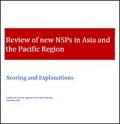What's New
Displaying results 3151 - 3160 of 4052

Resource | Guidelines,
It’s All One Curriculum: Guidelines and Activities for a Unified Approach to Sexuality, Gender, HIV, and Human Rights Education is the product of contributions from individuals around the world. It’s All One Curriculum offers content on almost any topic you might want to include in teaching young people about gender, sexual health, HIV, sexuality, relationships, communication, intimate-partner violence, puberty, reproduction, contraception, abortion, or advocating for their own rights. It is intentionally comprehensive, so that you can select the content and activities that meet your needs.
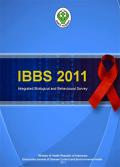
Resource | Publications,
The 2011 Integrated Biological and Behavioural Surveillance (IBBS) was conducted to obtain a picture of the magnitude of the problems, risk factors, knowledge and program scope, with the aim of understanding the dynamics of the HIV epidemic in Indonesia. The 2011 IBBS was conducted in 23 cities/regencies in 11 provinces, with most of the cities/regencies selected being those also surveyed in the 2007 IBBS.
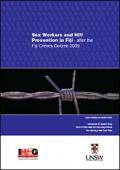
Resource | Publications,
On 1 February 2010, the Crimes Decree 2009 (Decree No. 44) of the Republic of Fiji Islands took effect. A report on sex work and HIV prevention in Fiji had very recently been released. UNAIDS Pacific funded the authors of that report to conduct follow-up research investigating any impacts of the new Decree on sex work and related HIV prevention activities. Thus, the original study was extended to encompass and take account of a changed legal environment. This report is the result.
Sex workers are among those who are most affected by HIV. The availability of appropriate and accessible services, information and resources are necessary conditions for HIV prevention. Nonetheless, prevention efforts will not be effective unless legal, political and social environments enable sex workers to protect themselves and their clients.
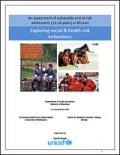
Resource | Publications,
The overall aim of the assessment was to gather strategic information about the behaviours and needs of vulnerable and at-risk adolescents in Bhutan aged 13-18 years. The focus of the assessment was on specific behaviours and settings that make this important, yet sometimes forgotten, group of adolescents susceptible to negative social and health outcomes including: tobacco use, alcohol and drug misuse; early school leaving; pregnancy; sexually transmitted infections, including HIV; and violence.
HIV prevalence is currently low in Bhutan however understanding the context for sexual behaviour, violence, and drug use is important for planning future adolescent related policies and programmes - not just for HIV prevention but also to foster healthy sexuality and positive relationships; tobacco, alcohol and drug education; prevention of gender based violence and promotion of mental health.
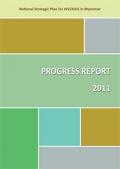
Resource | Publications,
In 2011, the implementation of the second National Strategic Plan on AIDS in Myanmar started. The NSP II covers the period from 2011‐2015. It builds upon the NSP I, but introduces also some changes to the structure and approach. Notably, prevention is further prioritized and aligned to the latest epidemiological data, the provision of ART set at the center of the provision of care and treatment and finally impact mitigation is highlighted as distinct strategic priority.
The NSP II has a set of ambitious targets that intend to lead the country towards achieving universal access by 2015. The targets were developed and agreed by all stakeholders through the Technical and Strategy Group as well as its technical Working Groups.
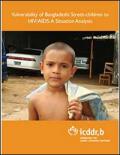
Resource | Publications,
The Asia-Pacific region is home to nearly 50% of the world’s children, including large numbers of street-children. In Bangladesh, about 42 million people (32.2% of the total population) are children aged 5-17 years. In Dhaka city where their numbers are increasing, there are an estimated two million street-children. According to the 1989 International Convention on the Rights of the Child, every human aged up to 18 years is a child. However, for the purpose of this study, children of both the sexes who are living and/or working in the streets of Dhaka city and who are aged 5-12 years were defined as street-children.
The findings of the study revealed that the street-children were extremely vulnerable to HIV/AIDS because of their living and working status; peer relationships; harassments by others; risky behaviours, including drug-use and sexual behaviours; lack of knowledge about HIV/AIDS and use of condoms to protect them from HIV/AIDS; and lack access to healthcare services.
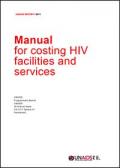
Resource | Guidelines,
As part of scaling up HIV prevention, treatment, care and support services within the context of universal access, countries need up-to-date and robust strategic information. This information is required to monitor and evaluate the effectiveness, efficiency, equity and acceptability of the HIV services. Information on the efficiency of HIV services requires up-to-date and robust information on the cost and cost–effectiveness of these services. The way to obtain information on cost is to perform a costing study.
The aim of this manual is to provide a simple guide on the process of gathering data to calculate the cost of HIV services provided at health facilities.
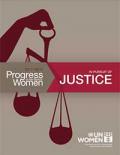
Resource | Publications,
This volume of Progress of the World's Women starts with a paradox: the past century has seen a transformation in women's legal rights, with countries in every region expanding the scope of women's legal entitlements. Nevertheless, for most of the world’s women the laws that exist on paper do not always translate into equality and justice. In many contexts, in rich and poor countries alike, the infrastructure of justice – the police, the courts and the judiciary – is failing women, which manifests itself in poor services and hostile attitudes from the very people whose duty it is to fulfil women’s rights. As a result, although equality between women and men is guaranteed in the constitutions of 139 countries and territories, inadequate laws and loopholes in legislative frameworks, poor enforcement and vast implementation gaps make these guarantees hollow promises, having little impact on the day-to-day lives of women.
To date, 186 Member States worldwide have ratified the Convention on the Elimination of All Forms of Discrimination against Women (CEDAW), which entered into force in 1981, signaling their commitment to fulfilling the human rights of women and girls and breaking down the barriers to achieving gender equality and justice.
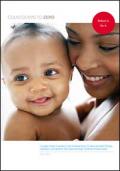
Resource | Publications,
This Global Plan provides the foundation for country-led movement towards the elimination of new HIV infections among children and keeping their mothers alive.
It is possible to stop new HIV infections among children and keep their mothers alive if pregnant women living with HIV and their children have timely access to quality life-saving antiretroviral drugs—for their own health, as indicated, or as a prophylaxis to stop HIV transmission during pregnancy, delivery and breastfeeding. When antiretroviral drugs are available as prophylaxis, HIV transmission can be reduced to less than 5%. Preventing HIV infection among women at increased risk of HIV and meeting unmet family planning needs of women living with HIV can significantly contribute to reducing the need for antiretroviral prophylaxis and treatment.
There is global consensus that the world must strive towards elimination of new HIV infections among children by 2015 and keep mothers and children living with HIV alive. Many low-and middle-income countries have already moved significantly towards achieving these goals.






